Hurricanes, earthquakes, bankruptcy, and a pandemic. When it comes to catastrophic events, Puerto Rico has experienced its lion’s share in the last decade. With these events have come economic vulnerability and population decreases. Yet despite the chaos, nothing has stopped Puerto Rican postsecondary institutions from working to achieve their educational missions.
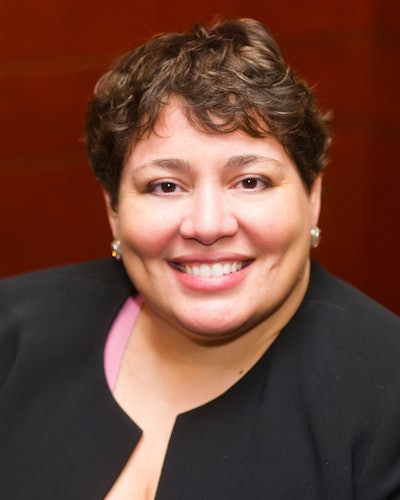 Dr. Deborah Santiago, co-founder and CEO of Ed Excelencia.
Dr. Deborah Santiago, co-founder and CEO of Ed Excelencia.
HSIs are a federal designation achieved when an institution’s student population is at least 25% Latinx. Being an HSI gives institutions access to grants and funding that must be used to better support and serve Latinx students.
Puerto Rican institutions have been what Santiago calls “canaries in the coal mine” for the crises now facing many U.S. institutions on the mainland, crises like dramatic drops in enrollment, the need to build infrastructure that supports distance learning, and balancing a budget as revenue decreases.
“We’re missing out on an opportunity to invest in, but also listen to and learn from, those who’ve been dealing with the challenges of higher ed, in many ways at the forefront of what others are facing,” said Santiago. “These are all U.S. citizens and U.S. institutions, and because of geography, we’ve chosen to selectively put them in another bucket, not include them in our thinking.”
Ed Excelencia’s report, Institutional Resilience in Puerto Rico: A First Look at Efforts by Puerto Rican HSIs, recognizes how Puerto Rican institutions have continued to keep their students enrolled and on track for completion. The report details just some of the efforts at five institutions, showing how leadership has found a way to dig in and continue to serve their students.
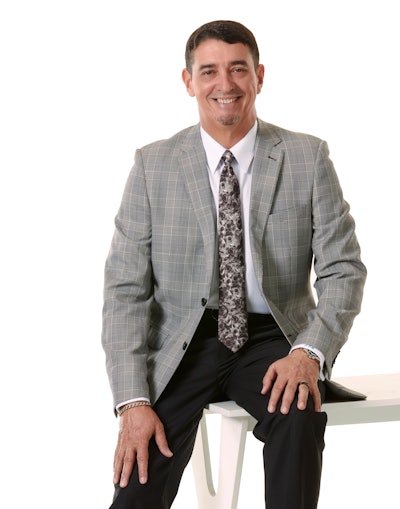 José F. Méndez Méndez, president of Universidad Ana G. Méndez.
José F. Méndez Méndez, president of Universidad Ana G. Méndez.
“After all the events that we have experienced during the past years, we are living in a new reality. Neither Puerto Rico nor the world is the same, and we all must be able to adapt to the new environment upon which we have had to build,” said Méndez Méndez. “Only in this way can we develop true resilience in the face of the challenges that the future will place among us.”
UAGM has campuses on the mainland, online, and an additional three locations on the island, including one in Gurabo. In the past, UAGM’s campuses were separate institutions, but within the last five years UAGM consolidated.
“Hurricanes, earthquakes, and the pandemic, all these circumstances have transformed the reality of our people. At times like these, the university must support our students and the community in general,” said Méndez Méndez. “These situations led us to evaluate our operations, look at the expenses we regularly incur, and take internal measures representing savings in our operations.”
Like many institutions of higher education, the main source of UAGM - Gurabo revenue is tuition and fees. Even though UAGM - Gurabo enrollment dropped from 17,167 in 2016 to 13,553 in 2020, Méndez Méndez and other leaders made conscious decisions that would keep the cost of tuition level. At the Gurabo campus, 82% of its 10,896 undergraduates are Pell eligible.
UAGM also created an assessment model to collect student feedback on their experiences in the classroom, strengthened mental health resources for students, and partnered with organizations and grant opportunities to provide childcare for their students.
Institutional consolidation did eliminate some roles and relocated others, but the goal of this transformation and other decisions made in the wake of catastrophes was to find ways to keep current students enrolled and on track to graduation. UAGM - Gurabo’s retention rate between 2016 and 2020 remained at or above 75%.
Enrollment decreases are partly due to the exodus of Puerto Rican residents after Hurricane Maria in 2017 and the earthquakes, which started rumbling in late 2019 and culminated in two quakes on Jan. 6 and 7, 2020 at a 5.8 magnitude and 6.4 magnitude respectively. Since then, the southern part of the island has felt tremors every day, said Dr. Rafael Ramírez-Rivera, acting president of the Inter American University of Puerto Rico system. Between 2010 and 2020, U.S. Census tracked an 11.8% population decline on the island, just under 440,000 people, many of them in younger age groups. The pandemic only made that decline worse, Rivera said.
Ramírez-Rivera said that Puerto Ricans hope to eventually rely less on federal resources, and that his institution is working to make Puerto Rico self-sustaining again by increasing biotechnology in agriculture programs and courses. Overall, Rivera said that the last few years have taught Puerto Rican institutions to be flexible and attentive to the true needs of the communities they serve.
“I think higher education in Puerto Rico, like in the U.S., are facing the challenge that we have to seek operational models that are more realistic and that they are pertinent to our society,” said Ramírez-Rivera. “If we continue to lose population, it may get to the point where institutions that will survive is because they are really pertinent to this society, that we could contribute not only education at the academic level but at the same time in life, democracy, ethics—trying to assure that our graduates are holistic human beings that can contribute to our society.”
The City Colleges of Chicago (CCC) have made a pledge for educational equity, and institutional and organizational partnerships will help make that pledge a reality.
The seven community colleges in the CCC system currently have a 30% completion rate for Black students and 33% completion rate for Latinx students. But CCC has committed to reaching a 55% completion rate for all by fiscal year 2032.
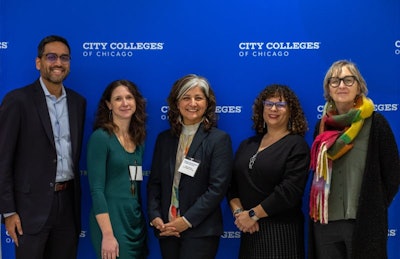 Pictured from the left, OMD CEO, Aneesh Sohoni; Kelly Hallberg, Scientific Director at University of Chicago Inclusive Economy Lab; Veronica Herrero, Chief of Staff and Vice-Chancellor of Institutional Advancement at City Colleges of Chicago; Joanna Trotter Executive Director at JPMorgan Chase; Marianne Bertrand, Professor of Economics at University of Chicago Booth School of Business .
Pictured from the left, OMD CEO, Aneesh Sohoni; Kelly Hallberg, Scientific Director at University of Chicago Inclusive Economy Lab; Veronica Herrero, Chief of Staff and Vice-Chancellor of Institutional Advancement at City Colleges of Chicago; Joanna Trotter Executive Director at JPMorgan Chase; Marianne Bertrand, Professor of Economics at University of Chicago Booth School of Business .
“It is a long-term goal, but it’s still incredibly ambitious when you look at the gap that’s currently there,” said Herrero. “We had to look at that gap and say, ‘ok, these are really big gaps, but we can’t be quiet about it, or say it’s too big to close.’ We absolutely had to put it out there, to mobilize not just district but city and state partners around this goal.”
Executing the vision will take collaboration, resources and data-driven solutions. That’s one of the reasons CCC has decided to expand its partnership with One Million Degrees (OMD), an organization that supports community college students to completion, ensuring they reach the path to economic mobility.
OMD currently serves about 900 students in the CCC network. Starting at Olive-Harvey College and eventually expanding to Malcolm X College, which have the highest percentage and number of Black students in the CCC system respectively, all incoming students will automatically be supported by OMD coaches. Students will have to “opt-out” of wrap-around services instead of “opting-in,” an approach that will make all the difference, said Dr. Jhenai Chandler, director of college completion at The Institute for College Access and Success (TICAS).
“We want to make sure all students do well,” said Chandler. “Now, OMD and CCC will be able to be proactive in pushing out services and supports that they know have gotten students to completion and retained in academics.”
TICAS studies student success programs that measure their effectiveness through Randomized Control Trials (RCTs), which ensure a practice, not an individual student, is key to producing a desired result. The University of Chicago’s Inclusive Economy Lab’s RCT of OMD helped to show CCC leadership that their support truly made a difference in a student’s probability of completion. Students who applied to OMD before they enrolled in a postsecondary institution were 70% more likely to enroll in college, 94% more likely to remain enrolled, and 73% more likely to earn a degree within three years and move into the workforce or pursue a four-year degree.
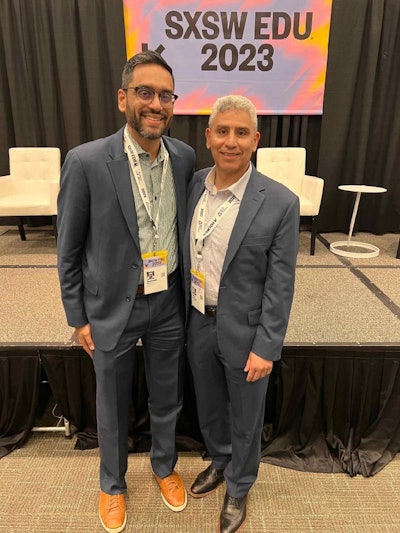 Aneesh Sohoni and City Colleges of Chicago Chancellor Juan Salgado participate in SxSW panel, How Diverse Students Access & Thrive in College. Photo credit: Jessica Douglas, OMD.
Aneesh Sohoni and City Colleges of Chicago Chancellor Juan Salgado participate in SxSW panel, How Diverse Students Access & Thrive in College. Photo credit: Jessica Douglas, OMD.
Aneesh Sohoni, CEO of OMD, said it took courage for Juan Salgado, chancellor of CCC, to open the doors to his institutions and build the partnerships and collaboration that will “ensure a broader set of opportunities for students who attend CCC.”
“What we’re doing here is really trying to show and demonstrate what is the true cost and investment necessary to really support our students to achieve career success,” said Sohoni. “We know it’s possible to invest in the true cost of supporting students. Many data suggest Chicago’s economy is not an inclusive economy as it is, and a big reason for that is not supporting the talent that attend CCC. We view this as a way to create a more just, equitable, and fair Chicago.”
If the new expanded partnership aligns with the Inclusive Economy Lab’s RCT research, the additional tuition revenue gained through retaining students will sustain the programmatic elements almost in their entirety, said Herrero. To cover additional costs, like the $1000 stipend, CCC will turn to its philanthropic foundation to start a campaign.
CCC hasn’t just expanded its partnership with OMD in its quest for universal 55% completion. They have connected with Achieving the Dream, a network of equity focused community colleges, and the College Excellence Program at The Aspen Institute, which works to improve higher education’s practices and leadership to better support students of color to success.
“We can’t achieve equity, and we can’t ensure our students are meeting their potential and experience the economic mobility they deserve after receiving a postsecondary education, without partnerships,” said Herrero. “Now that we’ve opened our doors, everyone can now see and recognize CCC as a true partner in improving the conditions of the city, making us more competitive, and making sure we’re making an inclusive workforce.”
Liann Herder can be reached at [email protected].
It’s taken months of collaboration across institutions, but east Tennessee’s only Historically Black College and University (HBCU) is on track to regain accreditation. The college is anticipating submitting its application for approval in April.
Knoxville College (KC), a private institution, lost its accreditation in 1997. Since then, it has regained authorized status in Tennessee, which allows them to confer credentials. If the school is able to regain accreditation, as those involved believe will happen soon, students will be able to access federal financial aid funding and state funding opportunities, including the Tennessee Student Assistance Award, which offers repayment-free financial aid to students from low-income backgrounds.
“KC lost accreditation for a number of reasons, one of those being financial stability. Financial aid for students is one of the largest conduits of state dollars to the institution,” said Dr. Brittany Mosby, director of HBCU Success, a branch of the Tennessee Higher Education Commission focused on the health and sustainability of the state’s seven private and public HBCUs. “In the 2021 school year, about $10 million went to HBCUs in the state through financial aid, and the year before that it was $12 million. That’s one of the reasons why accreditation is so important.”
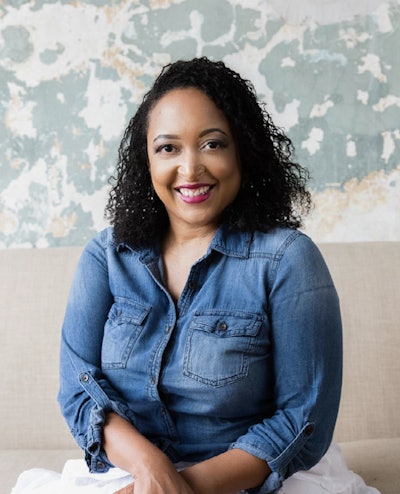 Dr. Dasha Lundy, executive vice president and chief operations officer of Knoxville College and District 1 Commissioner for the Knox County Commission.
Dr. Dasha Lundy, executive vice president and chief operations officer of Knoxville College and District 1 Commissioner for the Knox County Commission.
Lundy said Dr. Kevin James, president of MBC, was an inspiration.
“He did it, so we can do it too,” said Lundy. She reached out and asked James if he would help KC in its mission to regain accreditation. “[James] believes in HBCUs, so he said yes. He’d been through it and he knew the pitfalls. He knew how to guide the team. If we did this by ourselves, it would have took longer.”
Lundy said it was James who reached out across town to connect with the University of Tennessee (UT) Knoxville. Dr. J. Patrick Biddix, professor and program coordinator of the Higher Education Administration Ph.D. program at UT Knoxville, said he was excited for the chance to collaborate with KC, not only so his students could get hands on experience in the process of accreditation, but to help an institution as important as KC.
“KC has been a part of the Knoxville community for 150 years,” said Biddix, recalling the awe-inspiring moment he and his team of ten graduate students experienced walking through McKee Hall on KC’s campus, where Rev. Dr. Martin Luther King, Jr. gave the commencement address in 1960.
“You can teach students what it’s like to work at state or private institutions, but an HBCU is special. It’s different, it’s needed, it’s necessary,” said Biddix. “HBCUs come with a tremendous amount of history. A lot of the learning took place for the students beyond accreditation, in understanding the importance and necessity of HBCUs in this country.”
KC was founded in 1875 by the United Presbyterian Church for the education of newly freed men and women. By the middle of the 20th century, KC had become a liberal arts institution with a reputation for organizing social justice movements like sit-ins. Lundy, who is also the District 1 Commissioner for the Knox County Commission, wants to see the institution become a north-star for their community once again.
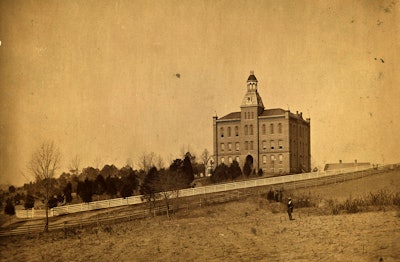 Early photo of McKee Hall at Knoxville College.
Early photo of McKee Hall at Knoxville College.
“The process of creating and understanding the materials, the pieces for the accreditation process, and the opportunity to work with a board of trustees toward approval and revision—that’s an incredibly valuable experience for the students,” said Biddix.
Biddix, Lundy, James and the A-Team are now in the final process of reviewing the hundreds of documents that make up their accreditation application, “crossing the t’s and dotting the i’s,” Lundy said.
“It’s been a long journey. I’m grateful for the team that’s stuck with us. It hasn’t been easy,” said Lundy, adding that the partnership KC, UT Knoxville, and MBC have built is testament to the power of what institutions can accomplish when they come together to “educate, empower, and elevate communities.”
“When we think about retention rates, especially with Black males—HBCUs are still significant. We may not have a billion dollar endowment, but we can depend on our sister institutions to help us,” said Lundy. “That’s what it’s all about. We’re here to serve people. This is a collaboration to show institutions can come together, not worry about who is taking whose students—it’s about lifting people and giving education to more people.”
Liann Herder can be reached at [email protected].
It was coincidental that the American College Health Association’s (ACHA’s) Gun Safety Task Force met shortly after the Michigan State University shooting earlier this month on Feb. 13, said Dr. Keith Williamson, co-chair of the task force and medical director at the Vinson Health Center at Midwestern State University in Wichita Falls, TX.
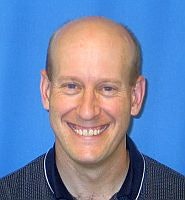 Dr. Keith Williamson, co-chair of the ACHA Gun Safety Task Force and medical director at the Vinson Health Center at Midwestern State University.
Dr. Keith Williamson, co-chair of the ACHA Gun Safety Task Force and medical director at the Vinson Health Center at Midwestern State University.
ACHA’s Gun Safety Task Force, five doctors and scholars from institutions across the nation, works to “come to grips with this phenomenon in society, with the ultimate goal being to understand it and diminish its occurrence,” said Williamson. “We are working to come up with some sort of understanding that will help provide guidance for ACHA when they have to deal with heart and mind events surrounding a shooting.”
While shootings on campus are extremely rare, said Williamson, the mental health and wellbeing of students, faculty, and staff can be deeply impacted by these events, which is why it is crucial that institutions of higher education respond to these incidents.
“The core mission of higher education is to educate our young people and put them into leadership roles for our society in the future,” said Williamson. “If [those in higher education] cannot focus on that, the institutional core mission is disrupted.”
Between 2013 and 2021, college students’ rates of depression and anxiety have increased by 135% and 110% respectively, according to research conducted by Boston University in 2021. There are many potential contributing factors to this increase, including financial concerns, the pandemic, and an overall sense of being unsafe, said John Richter, director of public policy at the Mental Health Association in New York State (MHANYS). MHANYS has been working to raise mental health awareness in the state since 1960.
But most suggested causal reasons for this increase need further study, said Richter. What experts do know is that mental illnesses are blamed as the reason for mass shootings, which further spreads stigma and a misunderstanding of mental health.
“Most people with mental illness are not any more dangerous than anyone else,” said Richter. “In fact, people with mental illness are 11 times more likely to be a victim of a violent act than they are to be the perpetrator.”
While the majority of college presidents say that providing mental health support for students is a priority, lack of resources and funding, a negative stigma, and an overall unfamiliarity with identifying mental illnesses can keep learners and educators on campus from accessing the support needed during trying times. It’s why MHANYS and Williamson’s Task Force are working to provide institutions with better understanding and sustainable resources that can keep college campuses healthy and thriving through the darkness.
 Dr. Laura Erickson-Schroth, chief medical officer of the JED Foundation.
Dr. Laura Erickson-Schroth, chief medical officer of the JED Foundation.
“Hearing about violence at other schools or seeing it depicted in the news can bring up difficult emotions, especially for young people who have experienced violence in the past. That’s why it’s important for all schools to offer support and resources after these types of events,” said Erickson-Schroth. “Communities of care are essential in supporting young people through tragedies. Even outside of tragedies, communities of care are proven to improve mental health and reduce suicide in young people. When teens and young adults feel supported by their school community, they have a safety net to catch them if they fall.”
Erickson-Schroth said it’s important for institutions to acknowledge violent events have occurred and let them know what support resources are available.
Preparing the campus community for violence incidence can take place through well-conducted, calm, emergency drills and collaboration between campus and community police forces. Those two things can go a long way to address fear and anxiety surrounding mass shootings, Williamson said.
“The more help we can get to people, the better they are able to mentally and psychosocially deal with the trauma in their lives, the better they’ll come out of it,” said Williamson.
Institutions that offer peer counseling have found great success in helping their students work through mental health struggles, Richter said. At the University at Albany, the Middle Earth Peer Assistance Program, begun in 1970, trains volunteer student counselors who meet with other students.
“They’re not replacements for counselors, but [peers] can be very helpful, especially to steer students towards help,” said Richter. “They’ve been shown to be very helpful for students who are experiencing symptoms of anxiety or depression in early recognition and getting people comfortable with the idea of getting help, before things become clinical.”
Richter agreed that having thorough plans for emergency situations can be key to helping a campus navigate potentially traumatizing events. Overall, more training and training earlier on, in the K-12 level, needs to be conducted, said Richter, so more people know how to not only recognize emergent mental health issues but also to encourage help-seeking behavior.
“Training helps build your confidence in what to say and how to say it. Often when someone is struggling, even to the point where they’re suicidal, a lot of people sense something’s wrong but don’t know what to do,” said Richter. “But when they are trained and do approach, it’s often the first time [that other] person has shared with another human being what’s going on with them and how desperate they really are—breaking that silence.”
Liann Herder can be reached at [email protected].
The Academic Pipeline Exchange is an open access database charting diversity, equity, and inclusion (DEI) programs in businesses, organizations, and institutions of higher education across the nation.
While the full database is only in its initial stages, Drs. Curtis Byrd and Rihana Mason are already working to turn their idea into a nationwide standard.
 Dr. Curtis Byrd, co-author of the 2021 book Academic Pipeline Programs: Diversifying Pathways from the Bachelor’s to the Professoriate.
Dr. Curtis Byrd, co-author of the 2021 book Academic Pipeline Programs: Diversifying Pathways from the Bachelor’s to the Professoriate.
“We’re looking at creating a national clearinghouse of diversity, BIPOC [Black, Indigenous, People of Color] initiatives for minoritized students, faculty and staff at universities,” said Byrd. “What we’re finding is that these programs are absolutely needed in the climate we’re in right now. We’ve not seen the growth that we want. There’s diversity happening among students, where the pipeline is slowing down is at the faculty level.”
Byrd, former special advisor to the provost at Georgia State University (GSU), said that institutions are struggling to diversify their faculty. Despite the increasing number of PhDs, those graduates are not continuing into the professoriate.
“So, we’re trying to figure out, how do we shift that, using these pipeline initiatives to move us in that direction, and helping institutions understand what they have, as they figure out ways to develop pipelines into doctoral programs and faculty positions,” said Byrd., who recently appeared on a panel sponsored by Diverse at the annual meeting of the Association of American Colleges and Universities (AAC&U) in San Francisco.
Pipeline and diversity programs in the database are assessed through what Byrd and Mason call the THRIVE Index: Type, History, Research, Inclusion, Identity, Voice and Expectation. These themes capture what kind of program is being indexed and its position at its institution, the historical context of the program, research components and how those are allocated to students, faculty, or staff, how programs strengthen and support identity and create inclusive spaces, how the programs capture and share participants’ voices, and what the overall goal of the program or initiative’s outcomes should be.
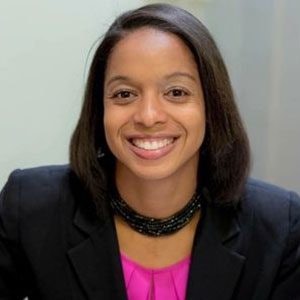 Dr. Rihana Mason, coauthor of the 2021 book Academic Pipeline Programs: Diversifying Pathways from the Bachelor’s to the Professoriate.
Dr. Rihana Mason, coauthor of the 2021 book Academic Pipeline Programs: Diversifying Pathways from the Bachelor’s to the Professoriate.
This kind of database is critical for institutions to have better awareness of what’s happening on their campus, said Mason, a research scientist at GSU. She added that, as GSU serves over 50,000 students, the THRIVE Index helped her institution discover the myriad of diversity programs and initiatives that were taking place.
“Being able to see something for Black students that was being sponsored in housing and sponsored with the library, as an example, I think was very eye opening,” said Mason. “Our system, the Academic Pipeline Exchange, brings all of what institutions do to be used as a central piece for people to be aware of what’s happening and how it’s moving their strategic plan forward.”
By building a nationwide clearinghouse of these programs, Byrd and Mason hope to bring greater awareness to institutions and also to the public. Interested community members could tap into the database and see what programs their local institution is running, how they are supporting marginalized individuals, across race, gender, sexual orientation, disability, and veteran status, follow the pipeline from pre-school to postgraduate degrees.
“Schools have all these different mechanisms to show you what they’re doing, but really—do they?” asked Byrd. He added that many institutions do not have information that is easy to find, “especially for any minoritized students, like those that don’t have parents used to the system to point them in the direction of what to do.”
Dr. Amer Ahbed, vice provost for DEI at UVM, said his institution is excited to be among the initial participants in this database. UVM is collecting THRIVE Indexes from their units and expects to see database results sometime in May. Ahbed said, when he first learned about the database development, he knew it was the right time for UVM to sign on.
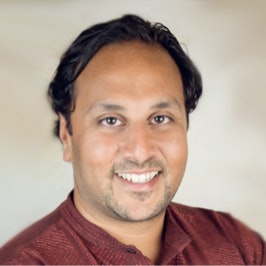 Dr. Amer Ahbed, vice provost for diversity, equity and inclusion at the University of Vermont.
Dr. Amer Ahbed, vice provost for diversity, equity and inclusion at the University of Vermont.
Ahbed added that he is excited to use this data to begin UVM’s first ever, data-driven, DEI strategic planning process. The THRIVE Index will help UVM set realistic goals, ones that put just as great an emphasis on the retention of diverse students, faculty and staff, as well as their recruitment.
“I think there’s an assumption based on our geography—there’s a perception that we may be very committed to LGBTQ+ issues but we might not have the same types of advancements with regards to DEI on the racial or ethnic dimensions,” said Ahbed. “I think that’s important for our overall recruitment and retention of faculty, staff and students for external constituencies to be aware that we’re doing a lot more than people realize, and that maybe UVM is something they might want to be a part of.”
Liann Herder can be reached at [email protected].
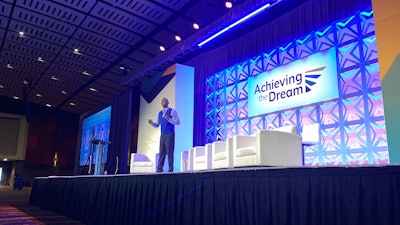 Frederick Shegog, former Delaware County Community College student, now motivational speaker.
Frederick Shegog, former Delaware County Community College student, now motivational speaker.
At the closing plenary of the 2023 Dream Conference in Chicago, Achieving the Dream (ATD), a reform network of over 300 community colleges, handed the microphone to students who either currently attend or graduated from a community college.
Motivational speaker Frederick Shegog shared how the support he received at Delaware County Community College (DCCC) was crucial to his evolution from a life of substance addiction to a life of spreading hope.
“Let me take you back to how it started. My whole life I felt stupid, less than. Being in this system with these barriers put me in a position that, almost seven years ago, I was downtown panhandling for change,” said Shegog.
After going to therapy and rehab, Shegog turned to education to start over. Faculty and staff at DCCC embraced him, Shegog said, seeing him as a human first and foremost, asking him to share who he was, his past, and his dreams. Consistent, holistic support put him on track to transfer to a four-year institution and gave him the tools and confidence to share his story with others. He now owns his own company, The Message LLC, and is working on a master’s degree while traveling and speaking across the country.
“Tonight, when you lay in your beds, I ask you, ATD, what is your legacy? What footprint are you leaving in the building, and what do they say about you when you exit?” asked Shegog. “W.E.B. Du Bois was right: education doesn’t just teach books; it’s supposed to be teaching life.”
Shegog’s experience was echoed by seven of the eight community college students of varying ages, racial and ethnic identities, backgrounds, and career pursuits selected to be ATD’s 2023 “Dream Scholars.” For almost a decade, ATD has selected Dream Scholars for this unique opportunity, offering networking and financial support as they grow their leadership and critical thinking skills.
“These Dream Scholars exemplify leadership and a commitment to improving higher education,” said Dr. Monica Parrish Trent, chief program and network officer at ATD. “When they depart Dream, they stay connected. The bond they share is unmatched.”
 Dr. W. Joye Hardiman, left, leads seven of the eight Dream Scholars in discussion on the last day of the Dream Conference in Chicago.
Dr. W. Joye Hardiman, left, leads seven of the eight Dream Scholars in discussion on the last day of the Dream Conference in Chicago.
Zachary Arreola, youngest dream scholar and student at the early-college program Gateway to College at Laney College in Oakland, CA, said community colleges must invest in housing for unhoused students right away. Dream Scholars Tommy McCall, a student at Tallahassee Community College in FL, and Eve Miclaus, a student at Roane State Community College in TN, said community colleges need to improve communication, doing more to share events and available resources.
“If I were community college president for a day, I would make student representation a bigger part of school,” said Miclaus. “We can all learn from one another. Sometimes students don’t know how to share their knowledge. [There’s a] lack of student representation within the big rooms.”
Luis De Luna, a student at MiraCosta College in CA, said community colleges should offer more life skills courses, including things like how to pay taxes or manage credit cards, something that could be particularly impactful to those in underrepresented communities who provide translation of complex government documents to their elders.
“I would also make therapy and mental health services available year-round, through the summer,” said De Luna. “When I went to therapy, I was afraid of the end of the semester because my services would be cut off.”
Tena Rynn Quackenbush, a student at Western Technical College in WI, said she was pleasantly surprised to learn about the postsecondary opportunities her institution was providing for incarcerated people, offering them crucial second chances, something she said everyone deserves. Quackenbush is pursuing a degree in nursing as she advocates for harm reduction. Her activism and efforts to spread awareness of life-saving tools like Narcan helped Jackson County, WI achieve zero accidental overdoses in 2019.
Quackenbush and her fellow Dream Scholars also expressed deep appreciation for the work happening behind the scenes at conferences like Dream.
“It’s a big deal you all care about us, analyze data and talk it over, share with each other what it is you’re doing to break down barriers and work towards equity and diversity,” said Quackenbush. “Thank you, everybody, for that.”
Dr. Karen A. Stout, president and CEO of ATD, handed each Dream Scholar a check for $3,500, the largest ever financial support ATD has been able to offer, gathered from generous donations in and outside the ATD network.
“As our Dream Scholars remind us, we need to be guided by the voices and lived experiences of our students. We should see our community in our curriculum,” said Stout. “Our guideposts need to start with students and community, and our journey must be driven by the need to eliminate systemic barriers, address student needs, and increase social justice and equity.”
Liann Herder can be reached at [email protected].
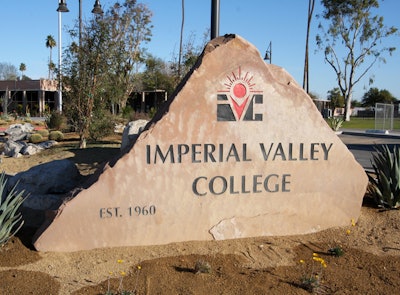
While visiting the kitchen, then Dean of Student Services Dr. Lennor Johnson met a married couple who were both enrolled at IVC, earning above 3.0 GPAs, and living out of their cars.
“That struck a nerve,” said Johnson, now IVC president and superintendent. “If you know anything about El Centro and our region, we’re in the middle of the desert. In the summertime, it can be well over 125 degrees—[living out of your car] is not sustainable.”
So that’s when he and other leadership at IVC began exploring the idea of student housing. Through a pilot program that offered 12 housing insecure students homes in RVs, Johnson said IVC learned a lot of lessons about the difficulties and triumphs of residential management, how to support students, and how to build community. Even though it was difficult, Johnson said the decision to invest in housing for their students was “so worth it.”
“When you start a housing program, designed for fostering homeless students, the message gets around quick: we’re not just a school, we’re a place you can call home, and everywhere you turn someone will support, coach and encourage you,” said Johnson. “No matter how big or small the issues, we’ll try to address it or solve it for you.”
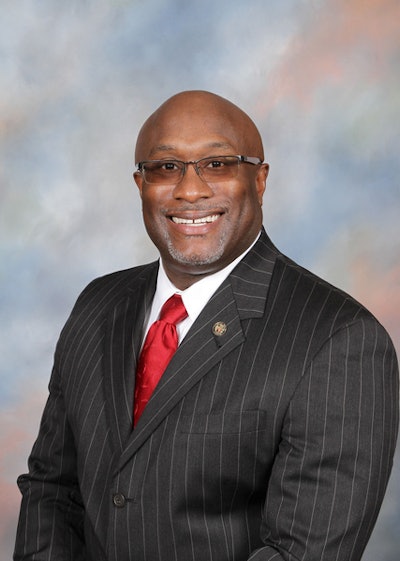 Dr. Lennor Johnson, president and superintendent of Imperial Valley College in El Centro, California.
Dr. Lennor Johnson, president and superintendent of Imperial Valley College in El Centro, California.
Out of the system’s 1.8 million attendees, current housing capacity exists for only 2,369 students. A 2019 survey of almost 40,000 California community college students found that 60% of respondents indicated they were housing insecure in 2018, according to The Hope Center for College, Community, and Justice, an action research center working to make higher education more equitable.
In 2021, California’s government allotted $2 billion over three years through the Higher Education Student Housing Grant Program and Capacity Expansion Grant Program, which provides one-time grants to support construction and renovation of living spaces on or near campus. Grants can also support the creation of dining facilities or student support spaces like basic needs centers.
“A residual effect [of having housing] is it really speaks to the campus community and community at large’s commitment to making sure our students are successful,” said Johnson. “More students are actively coming out and asking for help. There’s no shame or guilt. It really created that culture of care that we have been fostering for some time now.”
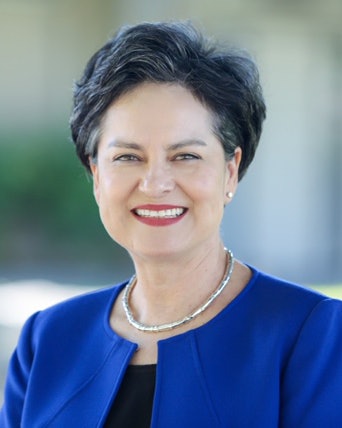 Dr. Angelica Suarez, president of Orange Coast College in Costa Mesa, California.
Dr. Angelica Suarez, president of Orange Coast College in Costa Mesa, California.
Now, IVC is hoping to expand their housing options again. They have acquired a grant in partnership with four-year San Diego State University, whose El Centro branch campus is just 11 miles away from IVC. The two institutions hope to build housing for an additional 20 students each, if they can raise the additional $5 million needed to break ground as planned in 2024.
Orange Coast College (OCC) in Costa Mesa offers the most housing of any community college in California—their living center, The Harbour, which opened in late 2020, has 800 beds in apartment-style dorms.
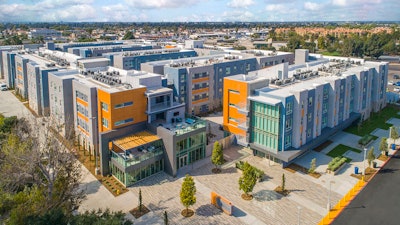 The Harbour, where 800 Orange Coast College students live on campus. The residence opened in 2020.
The Harbour, where 800 Orange Coast College students live on campus. The residence opened in 2020.
Suarez said OCC began to seriously consider housing about a decade ago, long before the state had allocated resources to these projects. To build The Harbour, they partnered with The Scion Group, which operates student housing at 78 campuses across the nation. Scion brought needed experience in how to create living environments that promote student success and a sense of belonging, Suarez said.
With the new state grants available, Suarez and her team are discussing what it would take to build another residential space—but first, she wants to make sure OCC is able to fully support those students currently living on campus.
Since the start of the spring semester, Suarez said she has encountered several students who have expressed their gratitude for the housing provided by The Harbour. The living community has helped them better connect with student life, activities, and support services that OCC offers.
“Creating that connection helps with the transition [to higher education],” said Suarez. “We know what we’ve gone through over the past two years with the pandemic, the isolation and the impact that’s had on students. To be on campus, to have that sense of connection and engagement is significant.”
Liann Herder can be reached at [email protected].
COVID-19 pushed higher education online almost overnight. The field transformed itself, troubleshooting on the go to make sure students could succeed while quarantining at home. Federal funding was heavily invested in resources that connected students with technology and high-speed internet.
As the pandemic has begun to taper, many institutions are transitioning back to fully-in-person education—but not all.
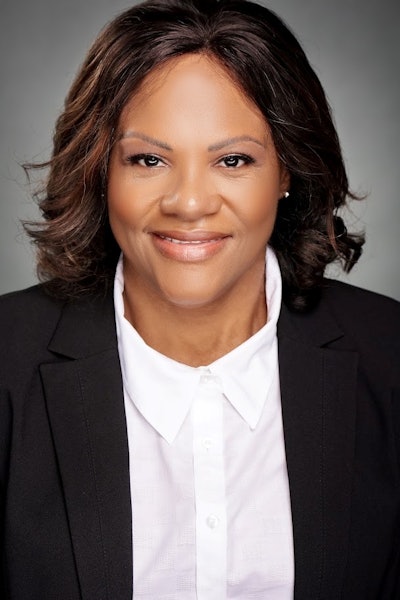 Dr. Jessica Davis-Ganao, associate professor and chair of the criminal justice program at North Carolina Central University.
Dr. Jessica Davis-Ganao, associate professor and chair of the criminal justice program at North Carolina Central University.
These programs offer their students options to attend class in person, online, or asynchronously. TCSG and NCCU representatives say this flexibility has made their students happier and increased equitable access to higher education, critical in a time of decreasing college enrollment numbers.
To better understand shrinking enrollment, Dr. Jessica Davis-Ganao had conversations with students about what might be preventing them from enrolling or persisting. Davis-Ganao is an associate professor and chair of the criminal justice program at NCCU, a Historically Black College and University (HBCU) in Durham, NC.
Students told her that their needs outside of the classroom, like work or caretaking for dependents, made it very difficult to attend class, particularly for students in the criminal justice program. Many early criminal justice careers work difficult hours that conflict with evening courses, said Davis-Ganao.
Davis-Ganao said she had been wanting to incorporate online instruction for almost a decade, but it wasn’t until COVID that she finally had the opportunity to push her department into the option. Now, they are pilot testing hyflex learning at the graduate level. In monthly gatherings, students relay just how much they appreciate the flexibility now available to them, and so far attendance has stayed at the same levels as in-person instruction.
“Students are absolutely loving it,” said Davis-Ganao.
The most difficult part of the hyflex transition has been acclimating faculty to new technology.
“Everyone we talk to about hyflex, they’re like deer in the headlights,” said Davis-Ganao with a laugh. “Once I explain it to them, they’re like, ‘oh, it’s what we did during COVID.’ But now, we have better technology.”
NCCU partnered with Webex by Cisco, an online conferencing software that offers high-tech ways to implement instruction, like digital whiteboards. It can also be integrated into an institution’s learning management system. Cisco offered multiple trainings to faculty, and Davis-Ganao has helped to troubleshoot lesson-planning to ensure both students and faculty have what they need to be successful.
Gary DePreta, an area vice president with Cisco’s U.S. public sector organization, said that although the pandemic was the trigger to move programming online, meeting students’ needs for greater flexibility was a long time coming.
“Our student populations were already beginning to have expectations of learning differently, having access to different resources as consumers. Nowadays, they can get everything remotely when they want from their iPhone,” said DePreta.
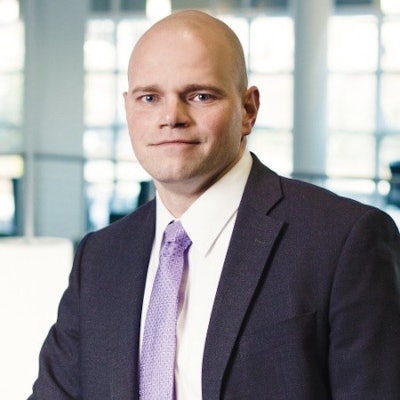 Steven Ferguson, chief information officer at the Technical College System of Georgia.
Steven Ferguson, chief information officer at the Technical College System of Georgia.
Before March 2020, Steven Ferguson, chief information officer at TCSG, was already working to incorporate newer, better technologies into instruction. When the pandemic hit, because many faculty were already comfortable incorporating online instruction, they were able to fine-tune and explore how to offer technical training remotely, even setting up remote evaluations for assessments like how to change a car’s brakes.
Ferguson started TCSG’s eCampus program during the height of the pandemic, focusing COVID resources like funding from the Coronavirus Aid, Relief, and Economic Security (CARES) Act on improving wireless in rural regions with sparse or slow signal, expanding access and opportunity to those not living in metropolitan areas.
“Two years later, in fall 2022, we have all 22 colleges participating [in eCampus], over 300 courses offered, and 2,400 seats taken,” said Ferguson, adding that consistent demand for online programming means that enrollment doesn’t vary by region. “Now, the school can leverage single faculty across multiple locations. It changes the economic incentive and allows [the schools] to provide more content into the communities they serve.”
This transition to hybrid learning is increasing the workforce across the whole state of Georgia, said Ferguson, meeting the needs of both students and employers.
“Not everyone has semesters and years to engage in education. They need something now,” said Ferguson. “We have to be more flexible. We’re serving tech natives, Gen Z—even Gen X and Millennials—they expect this hybrid environment. And if you don’t have it, they’ll find somewhere that does.”
Liann Herder can be reached at [email protected].
 Dr. Andrew Delbanco, president of the Teagle Foundation.
Dr. Andrew Delbanco, president of the Teagle Foundation.
“Broad issues that are raised by literature, history, and philosophy—why is the world organized the way it is? What are my responsibilities to my community, and what is my community? What is freedom, what does it mean? These questions, and more personal ones, like what’s the purpose of living, are on the minds of all students,” said Delbanco. “All young people are trying to figure out what kind of life they want to lead, and what kind of society they’d like to live in. Institutions of higher education have a responsibility to give students an opportunity to confront these questions in the context of classroom where they listen to their peers who bring very different experiences to the table, with the help of thoughtful teachers, and with the help of texts that bring these questions dramatically to the forefront.”
The humanities, said Delbanco, are crucial to a student’s development and understanding of their place in society, and diversity in the classroom is key to the success of that development. But since Delbanco first came to Teagle, higher education has continued to face questions about its relevancy and the role it can play in promoting diversity, equity, inclusion, and access in the country. As 44 states question the value of Critical Race Theory on college campuses, and the U.S. Supreme Court weighs the ability of institutions to use race as a consideration in admissions, Delbanco’s Teagle Foundation is working for greater diversity and greater access for students and institutions that support asking the big questions.
“I’m interested in students with diverse backgrounds talking to each other,” said Delbanco. “That’s why we particularly value the idea that, for incoming students, first or maybe second year, a certain portion of their coursework should be in a general education program where students get to discuss issues and texts with people who are unlike themselves. That makes for a very rich discussion.”
These discussions are supported by Teagle’s Cornerstone: Learning for Living program, cosponsored with the National Endowment for the Humanities. Participating institutions get up to 24 months of funding for classroom-based discussions of up to 200 faculty-approved texts designed to get students thinking about their place in the world. Participating institutions vary from Minority-Serving Institutions (MSIs), religious institutions, community colleges, and private non-profit institutions.
“Most of the time, I fear, too many academics wring their hands and lament their impending obsolesence, and express horror at the forces that seem to be pushing [humanities] to the margins. In reality, I think the better response is to think about students in a new way, and to think about one’s responsibility as a teacher and scholar in a new way, so that we can bring the joy of experiencing the humanities to more students,” said Delbanco. “It is about saying, 'all of you, regardless of what you do professionally, we want you to have the opportunity to engage in this kind of learning, debate, and discussion.'”
Dr. Loni Bordoloi Pazich and Dr. Tamara Mann Tweel, program directors at Teagle, both said they are deeply grateful for the chance to spread the liberal arts to more students.
 Dr. Loni Bordoloi Pazich, program director at The Teagle Foundation.
Dr. Loni Bordoloi Pazich, program director at The Teagle Foundation.
One of the programs Pazich works on is Transfer Pathways to the Liberal Arts, cosponsored by the Arthur Vining Davis Foundations, which supports two-year and private four-year academic partnerships at state, regional, and consortium levels. While the majority of community college students express a desire to move on to a four-year institution, less than a third are ever able to make the transition. By opening up the pathways to liberal arts institutions, Transfer Pathways to the Liberal Arts hopes to change that outcome.
The program has made significant progress in New England. The New England Transfer Guarantee has, in just three semesters, seen almost 600 students successfully move from their associate’s degree program into an independent liberal arts university in the region. Forty-five percent of those students identify as a marginalized population.
Through participation in this initiative, states and regional associations are working to address these blocks. Pazich said that institutional faculty have played a key role in learning how to adjust courses and credits to better align programming.
“Faculty have strangely few opportunities to talk about teaching and learning, particularly across institutions,” said Pazich. “That’s been very valuable, giving them a chance to talk in practical terms about their course objectives, what they hope to accomplish.”
Tweel was a professor at Columbia University when she helmed the classroom as part of the Freedom and Citizenship program. Freedom and Citizenship was the first of Teagle’s Knowledge for Freedom programs, which invites first-generation, college-bound high school seniors from the area into residence on campus for three weeks, where they will study philosophy, literature, and build a community that lasts beyond the program’s length.
The rewards weren’t just experienced by the students, Tweel said.
“Not only were the students incredibly grateful for the education, but they really transformed the way I thought about the text, the country, education. I felt bettered as a person from the experience of teaching these students,” said Tweel. “The more you have an opportunity to teach, especially when you live right next door, you’re in it together. It’s a shared mission, what does it mean to be a student and teacher in New York—and a lot of our programs feel that way. There’s a sense of a shared missions with the students, and that revitalizes the purpose of all education.”
Liann Herder can be reached at [email protected]
Title: Assistant Professor of Theatre and Performance Studies, New College of Florida
Age: 38
Education: B.S., psychology and theatre performance, University of Evansville; MFA, theatre pedagogy, Virginia Commonwealth University; and Ph.D., theatre and performance studies, University of Pittsburgh
Career mentors: Andrea Kidd, Miami-Dade Public Schools emeritus; Graciela Binaghi, Argentine mime artist; John David Lutz, University of Evansville emeritus; Christia Ward, University of Evansville emeritus; Tawnya Pettiford-Wates, Virginia Commonwealth University; Janet Rodgers, Virginia Commonwealth University emeritus; Rick Sordelet, Broadway fight director; J. David Brimmer, Broadway fight director; Lisa Jackson-Schebetta, Skidmore College; and Michelle Granshaw, University of Pittsburgh
Words of wisdom/advice for new faculty members: “The road is long. Slow down. Find places to replenish the batteries whenever possible. Just because you can (or know how to) doesn’t mean you should.”
When Dr. Diego Villada came to New College of Florida in Sarasota as assistant professor of theater and performance studies, he made a conscious decision not to teach acting with the standard 20th century texts written by white men. Instead, he sought out literature from different perspectives.
“There are specific skills that need to be taught, to be trained, but we don’t need to do that with the same plays, the same books. That comes directly from me being a Latinx artist,” said Villada. “Theater doesn’t belong to any particular culture — it belongs to the human impulse to tell stories.”
Villada selected Black Acting Methods by Dr. Sharell D. Luckett and Dr. Tia M. Shaffer as a guiding text, wanting to help his students engage with and think about performance differently.
“Now they have an entry into this way of thinking and working from the Black perspective,” said Villada. “[Students can] begin thinking about their own background. That person can ask themselves, what generation American am I? Ask their family about their background, and what does that inform about their acting work in something as simple as monologue. It’s my small way of decentralizing whiteness.”
New College’s liberal arts structure allows students with an interest in theater to take a course, whether that’s in performance, dance, or technical theater. Villada consistently works across departments, especially if the work requires a focus on marginalized populations. But his interest in theater and supporting diversity doesn’t stop at the university walls.
During his office hours, artists from Sarasota are welcome to stop by. Theater tickets are free to all who are interested. Villada works to build connections with local theater groups such as CreArte Latino Cultural Center, a local Latinx theater company, and UnidosNow, a regional organization that pairs high school students from Latinx backgrounds with a mentor to guide them through the process of applying for college.
Villada called that “my way of bringing service to my university but also to my region. I view myself as a state worker; I work for the state and the people of Florida. I see myself having a mandate to serve the people of Florida, to help artists in the community.”
Dr. Miriam Wallace, professor of English and gender studies at New College, said Villada’s scholarship is helping New College grow.
“We’re understanding better from him what the world of theater looks like and what can count as scholarship — not just peer-reviewed articles, but public facing work in the community and how you work with students,” said Wallace. “He gets us thinking about things differently.”
Wallace said Villada’s presence has made theater more accessible for their growing Latinx population. New College is on the way to becoming a Hispanic-serving institution with 18% of its student population identifying as Latinx, according to the National Center for Education Statistics. Villada worked with a Spanish and Caribbean literature student to transform her work into a Spanglish performance, and Wallace says it resonated.
“Our Latinx students were suddenly saying, ‘Oh, this could be for us!’ They had the idea that theater was by and for the white kids on campus,” said Wallace. “I saw students engaging in theater in a different way. We’re still doing Shakespeare, but there’s also contemporary, student-devised pieces. [Villada] brought a level of enthusiasm and energy, and the program just ticked up. It’s become hugely popular.”
Villada said he is proud not only of the work he’s done at New College but the way he’s been able to continue to grow professionally as a director, fight choreographer, and intimacy coach for productions. He added that he loves helping students find the joy of expressing themselves through theater, dance, and performance.
“In higher education we don’t talk about this enough — yes, salary and employability are important — but so is having a happy life and feeling fulfilled. I care about that in my students,” said Villada. “I care about the fact that my students can bring their whole selves — I don’t ask them to leave their Latinx or Blackness at the door — I try to infuse that and encourage students to connect with their cultural background.”
Nearly 54% of working age adults in the U.S. have achieved some kind of postsecondary degree or credential, putting the country even closer to the Lumina Foundation’s goal of 60% attainment by 2025.
Lumina, a private nonprofit working to increase learning opportunities for all after high school, has been tracking credential and degree attainment for adults from 25 to 64 years of age since 2008. The latest numbers for 2021 have revealed the largest two-year increase in degree attainment since Lumina began this project.
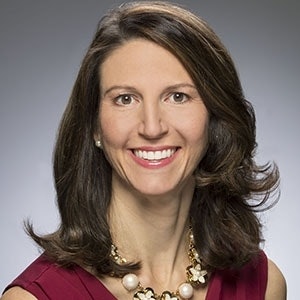 Dr. Courtney Brown, vice president of impact and planning at Lumina Foundation.
Dr. Courtney Brown, vice president of impact and planning at Lumina Foundation.
To create its Stronger Nation report, Lumina uses data collected by the American Community Survey, part of the U.S. Census, to track associate, bachelor’s, and graduate or professional degree attainment, as well as the Georgetown University Center on Education and the Workforce to track certificate and certification attainment. Data is broken down by state and by race and ethnicity, with the highest attainment found in D.C. at 72.4%, and the lowest attainment in Nevada at 43.9%.
“Even during the pandemic and economic crisis we’ve experienced, [the attainment rate] has grown every year, thanks to hard work across the nation, communities, and states, through strong partnership and better measurement,” said Brown.
While Brown acknowledged the latest numbers as a mark of success, it remains marred by the continued, stubborn gap in achievement between white and Asian American Pacific Islander (AAPI) populations and Black, Latinx, and Native American populations. While all racial groups saw an increase in attainment, Black, Latinx, and Native American attainment remain 15 percentage points or more below the national average.
“Seeing gaps in opportunities for continued progress helps us to sharply focus efforts as we move forward as a nation, as states, and in our communities,” said Brown. “It reinforces the urgent need to speed up progress, especially knowing tomorrow’s students will be even more diverse.”
In 2008, only one state had set a degree or certificate attainment goal for its own population: Hawaii. Since then, 47 states have joined Hawaii and set goals similar to Lumina’s 60% attainment. But setting statewide goals that intentionally target minoritized populations to close attainment gaps can be tricky, particularly after the Supreme Court makes its ruling on the use of race in admissions, said Dr. Frank Fernandez, an assistant professor of higher education and policy at the University of Florida.
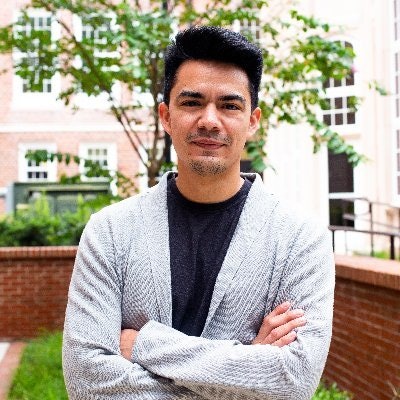 Dr. Frank Fernandez, assistant professor of higher education and policy at the University of Florida.
Dr. Frank Fernandez, assistant professor of higher education and policy at the University of Florida.
Brown acknowledged that the broad racial categories in Lumina’s dataset can mask differences experienced between ethnicities, so Lumina further disaggregated degree attainment. By breaking down the Latinx populations, the data reveals that, while 70% of Venezuelan adults in the U.S. have attained a degree or credential, only 15% of Guatemalan adults in the U.S. have attained the same. Similarly, in AAPI populations, 90% of Taiwanese adults in the U.S. have attained a degree or credential, compared to only 29% of Pacific Islander adults in the U.S.
“What’s important to know is none of this is an overnight fix. It’s a lot of people paying attention to increasing education beyond high school,” said Brown. “More institutions are focused on [completion]. They’re concerned about adult learners and ensuring that we’re serving them better, better serving other races and ethnicities, and how to provide credentials that lead to good jobs and lives?”
Fernandez said the attainment gap should encourage more research to discover institutions and states that have done a good job moving the needle on attainment in Black, Latinx, and Native American populations, to see if there are exemplars that can transfer elsewhere for continued improvement.
“We don’t want to dismiss the progress being made—it is representative of a lot of underpaid adjunct faculty and college counselors, doing their best to help students get through, not to mention all the work students are doing to improve their lives and the lives of their families,” said Fernandez. “[Sixty percent] is not a nebulous policy goal, it’s people’s lives and dreams.”
Liann Herder can be reached at [email protected].
On Thursday evening, the president of the philanthropic Andrew W. Mellon Foundation Dr. Elizabeth Alexander and Secretary of the Smithsonian Institution Dr. Lonnie G. Bunch III came together to discuss the increasingly vital role public institutions play in teaching American citizens their country’s history, particularly the history of Black people.
 Dr. Elizabeth Alexander, president of the Andrew W. Mellon Foundation.
Dr. Elizabeth Alexander, president of the Andrew W. Mellon Foundation.
Alexander praised Dr. Marvin Dunn, professor emeritus of psychology at Florida International University, who has pledged to continue teaching his syllabus as originally constructed before the 2022 passage of the Stop the Wrongs to Our Kids and Employees (WOKE) Act.
“The whole ‘WOKE’ bill says if you teach African American history to people, it will make them feel guilty and, therefore, you can’t teach it,” said Alexander. “Dunn is teaching on his own about lynching in Florida—there were more lynchings in Florida than Alabama. It’s a history that must be told and folks are doing it—but Dunn does it at a risk to himself and the people he teaches.”
Bunch agreed with Alexander’s concerns, calling Florida the “bellwether,” as 42 other states currenting have pending legislation that would prevent nuanced discussion about issues of race and racism in U.S. history.
“What’s amazing to me is, right now, there are 17 million high school and middle school students in parts of the country where that history can’t be taught,” said Bunch. “There’s a shadow over this, a sense that these stories, as important as they are, are not stories all Americans need to know. I’m worried that shadow [is] really effecting university professors and teachers.”
Bunch was the first director of the National Museum of African American History and Culture, part of the 19 museums of the Smithsonian Institution, which opened in D.C. in September 2016. Scholars from that institution joined experts from colleges and universities around the country, assisting the College Board for over a decade in the design of their AP African American Studies course, now banned in Florida.
 Secretary of the Smithsonian Institution Dr. Lonnie G. Bunch III.
Secretary of the Smithsonian Institution Dr. Lonnie G. Bunch III.
Bunch called this moment a “fight for all who care about education and the notion of America as a work in progress.”
“History is always divisive, and people are brave enough to understand that complexity—let’s give them some credit,” said Bunch.
Alexander said, in spite of the legislation in Florida and other states, she remains hopeful. By bringing a social justice focus to the philanthropy of the Mellon Foundation, Alexander said she has the opportunity to support arts, culture, and the teaching of history and humanities in higher education.
“People are doing incredible things. Lifting up under-recognized and under-resourced voices means we’re hearing so many different stories that people hold—and they hold their history forever—but now it’s available to so many more people,” said Alexander. “When you see people’s imaginations catalyzed and ready to go, that’s a hopeful thing all day long.”
Liann Herder can be reached at [email protected].
Socio-economic status has a strong correlation with whether or not a high school graduate enrolls in college within 18 months of graduating. Almost 90% of students whose family income places them in the top quintile of earnings decide to enroll in either a two or four-year college, while just over 50% of high school graduates coming from the lowest quintile of earnings go on to enroll in postsecondary education.
But new research shows that if high school graduates from any socio-economic quintile receive the same amount of college preparation, as defined by high school GPA, math and English grades, number of IB or AP courses taken, and standardized math test scores, the college enrollment gap between the top quintile and bottom quintile shrinks from almost 40 percentage points to just 20.
 Dr. Sade Bonilla, an assistant professor of policy, organizations, leadership and systems division at the University of Pennsylvania.
Dr. Sade Bonilla, an assistant professor of policy, organizations, leadership and systems division at the University of Pennsylvania.
This study, conducted by the Center on Children and Families, part of the nonprofit policy research organization Brookings Institute that researches how U.S. policies impact the lives of families living in poverty or facing inequality, shows that gender and race gaps in college enrollment are directly connected with academic preparation in high school.
“These findings are consistent with research on earlier cohorts, [which] suggests that closing gaps in academic preparation is key to making progress on college enrollment gaps,” said report co-author Sarah Reber, the Joseph A. Pechman senior fellow in economic studies at Brookings.
Education experts spoke about the study, its findings, and what higher education can do to reduce college enrollment gaps created by socio-economic status at a webinar on Monday. They encouraged postsecondary institutions to increase supports for low-income students, and to build more opportunities for students to access and succeed in college-level courses earlier through methods like early college high schools or dual-credit opportunities.
Overall, they agreed that, although the academic preparation journey begins long before a student comes to campus, higher education must play a key role in addressing gaps in access.
“My fear about this work is that it could be interpreted by institutions of higher education as saying, 'Well, we’re doing what we can, it’s not our problem,'" said Dr. Richard Reeves, a senior fellow in economic studies at Brookings and author of Of Boys and Men: Why the Modern Male is Struggling, Why It Matters, and What to Do About It. Colleges might, Reeves said, assume that a student’s lack of college readiness was the high school’s fault.
“Everyone can point earlier and earlier—high schools can point to middle schools, middle schools to elementary schools—and it’s not to say it isn’t true, but it’s in no way an abdication of responsibility,” said Reeves. “It’s a college’s job to be student ready, as it is for students to be college ready.”
Dr. Sade Bonilla, an assistant professor of policy, organizations, leadership and systems division at the University of Pennsylvania, said that postsecondary institutions traditionally spend the most money on students who already have the most advantages.
 Dr. Lindsay Page, the Annenberg associate professor of education policy at Brown University.
Dr. Lindsay Page, the Annenberg associate professor of education policy at Brown University.
Reeves agreed and added that the “over-application of meritocratic principles [in higher education] flies in the face of other values like social mobility or social welfare.”
Dr. Lindsay Page, the Annenberg associate professor of education policy at Brown University, said that although elite institutions garner the most resources, it is the regional public schools that tend to be more effective at pushing students into higher economic quintiles after graduation. She added that community colleges, especially those that partner with local high schools to create dual enrollment or early college high schools, are moving the needle on college access.
“Early college high schools also come often with better counseling and guidance around pathways students take into and through the community college experience,” said Page. “These kinds of programs lead to dramatic improvement in associate degree attainment, and some continue on to a bachelor’s degree.”
For Reber, the study presents an opportunity for everyone in education, particularly postsecondary education, to question the relationship between academic preparation, socio-economic status, and college enrollment.
“The relationship between a high school GPA and college enrollment is very strong, but we shouldn’t think of it as set in stone and make policies that way,” said Reber. “Students who have had good access to education might not benefit as much from all these resources in college as a student who doesn’t have those opportunities already.”
Liann Herder can be reached at [email protected].